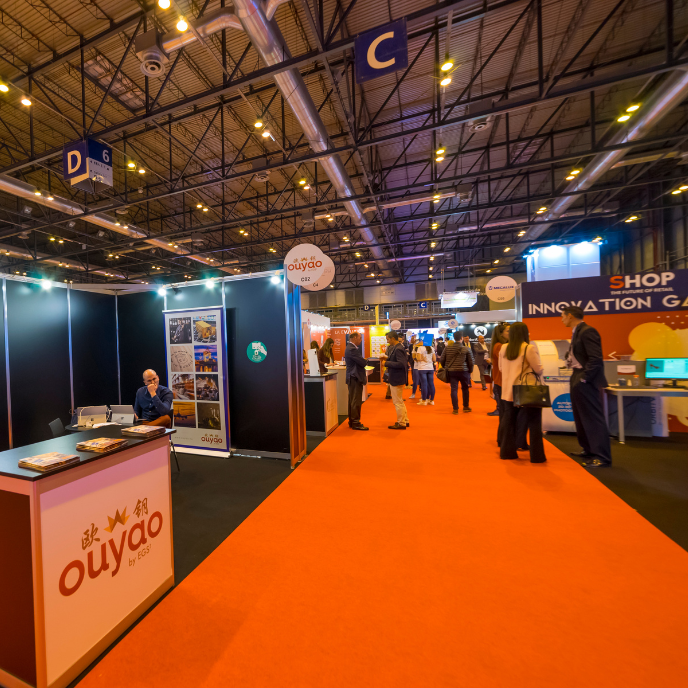Facing the Reality of Virtual Events

Facing the Reality of Virtual Events
Virtual events have increased 1000% since the outbreak of COVID, according to Forbes. Among organizers forced to cancel 2020 events, the shift to digital has grown to 81%, based on Center for Exhibition Industry Research conducted in June – compared to 69% in their April survey. With COVID concerns pushing more and more companies like Heidelberg, Fujifilm, Komori, Xerox, Kodak and EFI to pull out of Drupa 2021, the print industry’s event landscape has been completely altered.
There are pros and cons to virtual events. On one hand, virtual events provide several cost-saving benefits – like no travel costs, no hotels and no physical booths or equipment to ship. Anyone can attend, from anywhere and at any time. And the recorded assets become a library of high-value content that can be shared through any number of channels. On the other hand, getting folks to attend – and keeping those who do engaged – is not an easy task. The physical element of shaking hands, making eye contact, and talking in-person are missing.
55% of respondents in a survey conducted by Bizabbo say that customer relations, education, and retention are the main goals for their virtual events. Meanwhile another survey by Markletic shows that 45.7% of marketers say the primary goal of virtual events is to generate a pipeline.
Getting Bums in Seats
Screen fatigue is real, making it harder to attract attendees. Once registered, getting them to show up “live” is the next hurdle, followed by keeping them engaged throughout the event duration. According to Markletic, 89% of event planners use social media to engage people before the event, 49% of event planners use social media to engage attendees during events, and 13% use it for interaction with speakers.
Embracing the power of direct mail can help create an engaging, global community experience – in the comfort of your own home. Just because physical events are on hold doesn’t mean giveaways are too. Do them! Mailing program guides, VIP invitations and swag – like lanyards, pens, t-shirts, or an “all-access pass” – are great incentives to show up – and show off – your brand. This encourages attendees to participate, take pix, share, enjoy – and return for the next event.
Keeping Attendees Engaged
With virtual events, it’s critical to keep the conversation flowing both ways – many attendees will only be listening passively, or will not show their faces on webcam, which results in lackluster engagement. A 2020 report by Amex reveals that 54% of event planners are spending more of their time and attention on the attendee experience instead of logistics.
81.8% of event planners use event polling to improve interaction and 61% use videos to keep people engaged. Frequently reminding attendees to engage and participate is key. Encourage them to submit questions, raise their hands, or simply “type x in the chat if…” for active listening and participation. 68% of B2B companies hire external moderators for their virtual round table discussions.
Technology
Having a bad connection is the biggest annoyance in a virtual event, according to Markletic, followed by audio and then camera quality. This means that even if the video quality is subpar and there are no subtitles, folks can still rely on clearly hearing the content if audio quality is not compromised.
The study also reports that 41% of event organisers use Zoom for their small virtual events, followed by Microsoft Teams at 29%. 31.6% of B2B marketers use Intrado as their virtual event hosting platform for large conferences while 20.1% use ON24. Many event tech platforms are also used to plan and coordinate teams in the weeks leading up to the live event, an efficient way of managing an event during the planning stages.
A Look Towards the Future
2020 has forced us to rethink every aspect of business, including where and how it’s conducted. Research shows that the virtual events industry will grow nearly ten-times (yes, ten-times) by 2030 – from $78 billion to $774 billion. Conferences, networking events, corporate seminars, user groups, trade shows have transitioned from large convention centres – to home offices, kitchen tables, and parked cars – via laptops, tablets and mobile devices. With no clear “return to normal” date in sight, virtual events have taken over – and are reshaping how we network, learn, share, collaborate and showcase our products and solutions.
Discover more ways to stretch your B2B marketing dollars – and drive awareness, engagement, and growth.
#Marketing #Tips #Strategy #B2B #Phygital #CustomerExperience #CX #omnichannel #technology #COVID #virtualexperience #digital #virtualevents #virtualtradeshow #directmail #swag #conventions #engagement #participation
Portions of this article were published with permission in Graphic Arts Magazine.
Image credit: Pixabay



